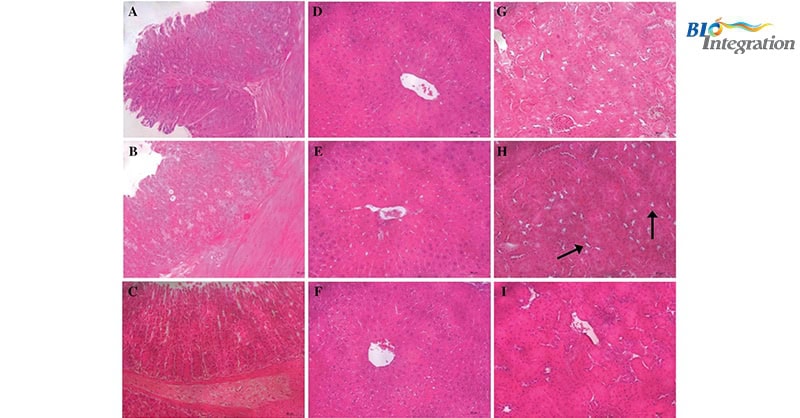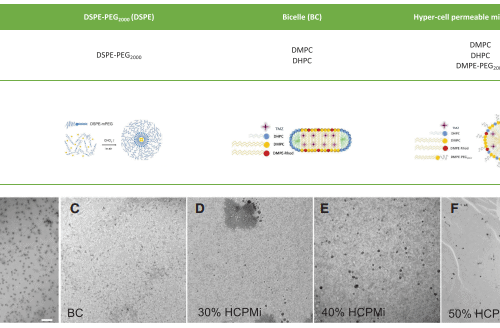
Toxicologic Profile and Anti-Nociceptive Effect of Two Semi-Synthetic Triterpene Derivatives from Combretum Leprosum in Mice
Announcing a new article publication for BIO Integration journal. Combretum leprosum Mart. serves as a medicinal plant in traditional Brazilian medicine. The beneficial effects of C. leprosum Mart. are attributed to the triterpene, 3β,6β,16β-trihydroxylup-20(29)-ene (CL-1). The authors of this article evaluate the toxicity of two semi-synthetic derivatives from CL-1 (CL-P2 and CL-P2A) in vitro and in vivo, and determine the efficacy in zymosan-induced writhing response and the putative mechanism of action.
Toxicity prediction was assessed using the PROTOX-II and ADMETlab 2.0 prediction tools, and SMILES codes for structure identification. In vitro cytotoxicity of the derivatives was tested using the sulforhodamine B assay in L929 and HaCaT cells at 24, 48, and 72 h. Mice received (oral gavage) CL-P2 or CL-P2A (10 mg/kg/d) for 14 days in in vivo toxicity assays. Blood samples and organs (stomach, liver, and kidneys) were collected for AST/ALT level determination and H&E staining, respectively. The anti-nociceptive effect of CL-P2 and CL-P2A (0.1, 1, or 10 mg/kg) was evaluated in the zymosan-induced writhing response. The peritoneal exudate was collected to determine myeloperoxidase (MPO) and superoxide dismutase (SOD) activity, and nitrite concentration.
CL-P-2 and CL-P2A derivatives exhibited low cytotoxicity and did not change body mass, AST/ALT levels, or organ weight. The histopathologic analysis did not reveal significant changes in organs. Both derivatives inhibited the writhing response in a dose-dependent manner. In addition, both derivatives failed to reduce MPO activity. However, CL-P2A increased SOD activity and CL-P2 decreased nitrite/nitrate levels.
CL-P2 and CL-P2A were shown to exhibit anti-nociceptive effects without toxicity. This data suggests that CL-P2 and CL-P2A efficacy is mediated, at least in part, via antioxidant activity by modulating nitrite/nitrate levels and SOD activity, respectively.
Read more at Scienceopen: https://www.scienceopen.com/hosted-document?doi=10.15212/bioi-2024-0009
BIO Integration is fully open access journal which will allow for the rapid dissemination of multidisciplinary views driving the progress of modern medicine. As part of its mandate to help bring interesting work and knowledge from around the world to a wider audience, BIOI will actively support authors through open access publishing and through waiving author fees in its first years. Also, publication support for authors whose first language is not English will be offered in areas such as manuscript development, English language editing and artwork assistance.
BIOI is now open for submissions; articles can be submitted online at: https://mc04.manuscriptcentral.com/bioi
There are no author submission or article processing fees.
Please visit www.bio-integration.org to learn more about the journal.
Editorial Board: https://bio-integration.org/editorial-board/
BIOI is available on the ScienceOpen platform.
Follow BIOI on Twitter @JournalBio; Facebook (https://www.facebook.com/BIO-Integration-Journal-108140854107716/) and LinkedIn (https://www.linkedin.com/company/bio-integration-journal/).
ISSN 2712-0074
eISSN 2712-0082
Maria Juliane Passos, Hellíada V. Chaves and Francisco G. Barbosa et al. Toxicologic Profile and Anti-Nociceptive Effect of Two Semi-Synthetic Triterpene Derivatives from Combretum Leprosum in Mice. BIOI. 2024. Vol. 5(1). DOI: 10.15212/bioi-2024-0009




